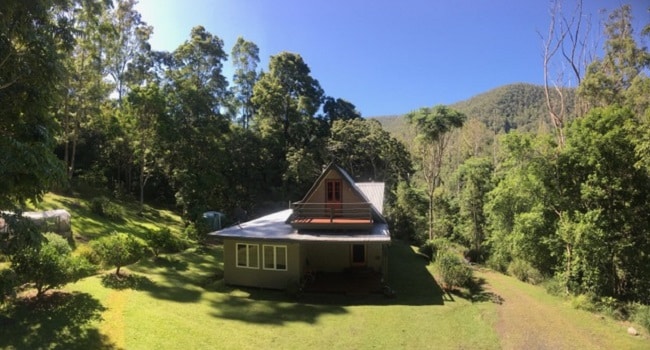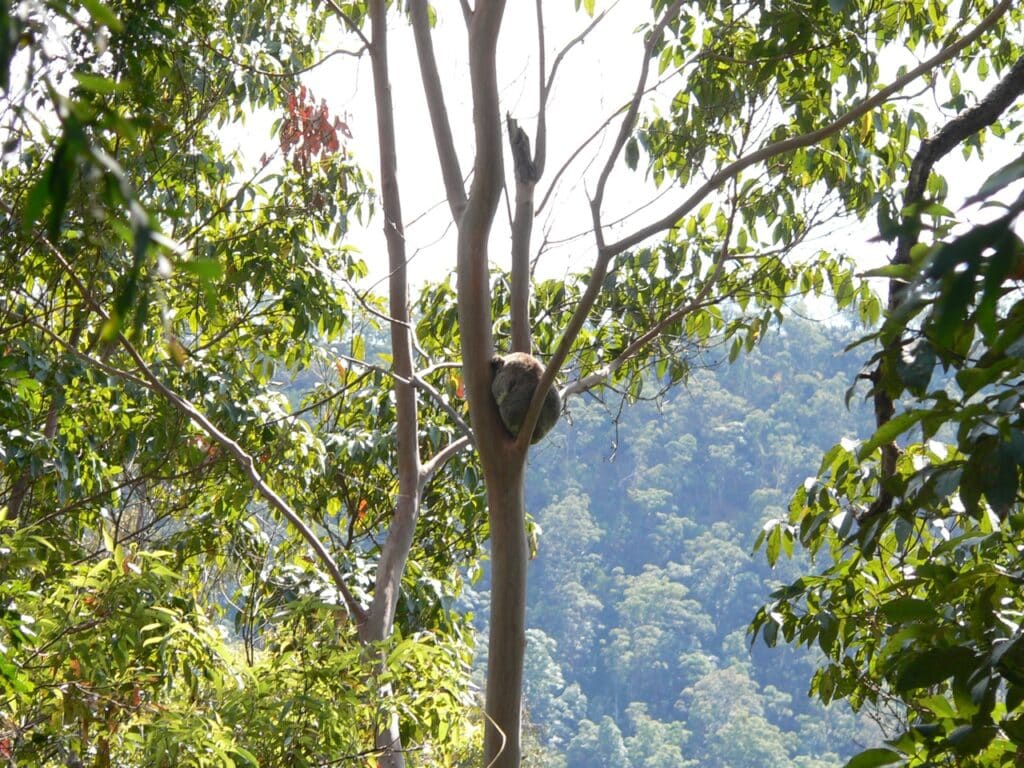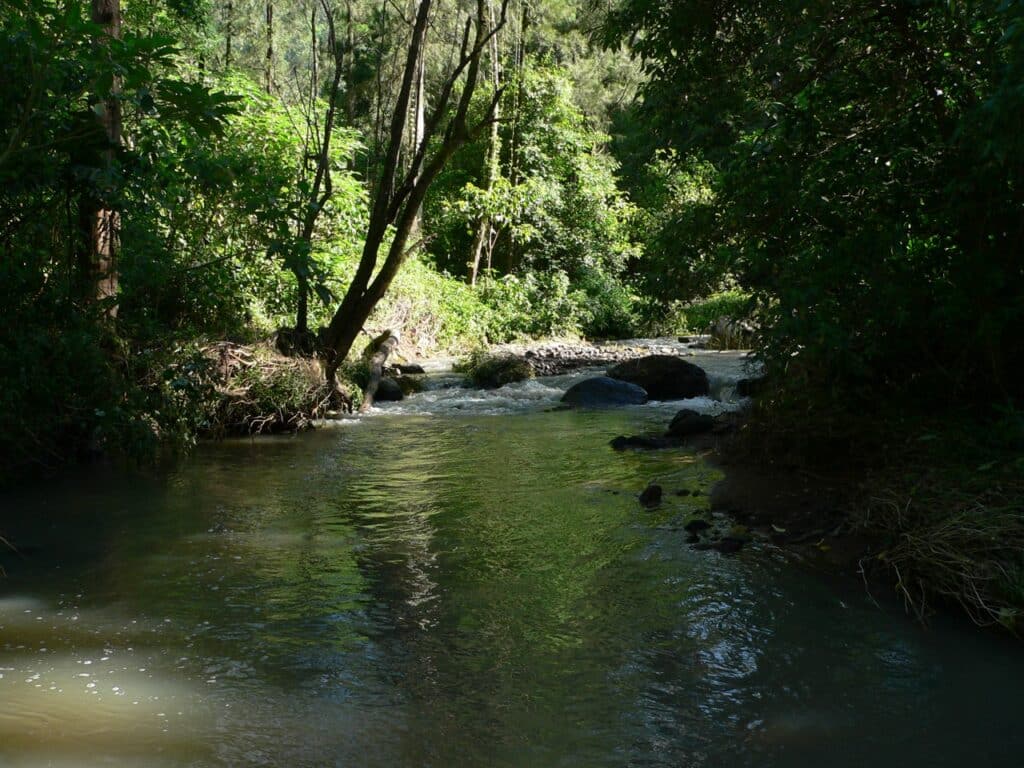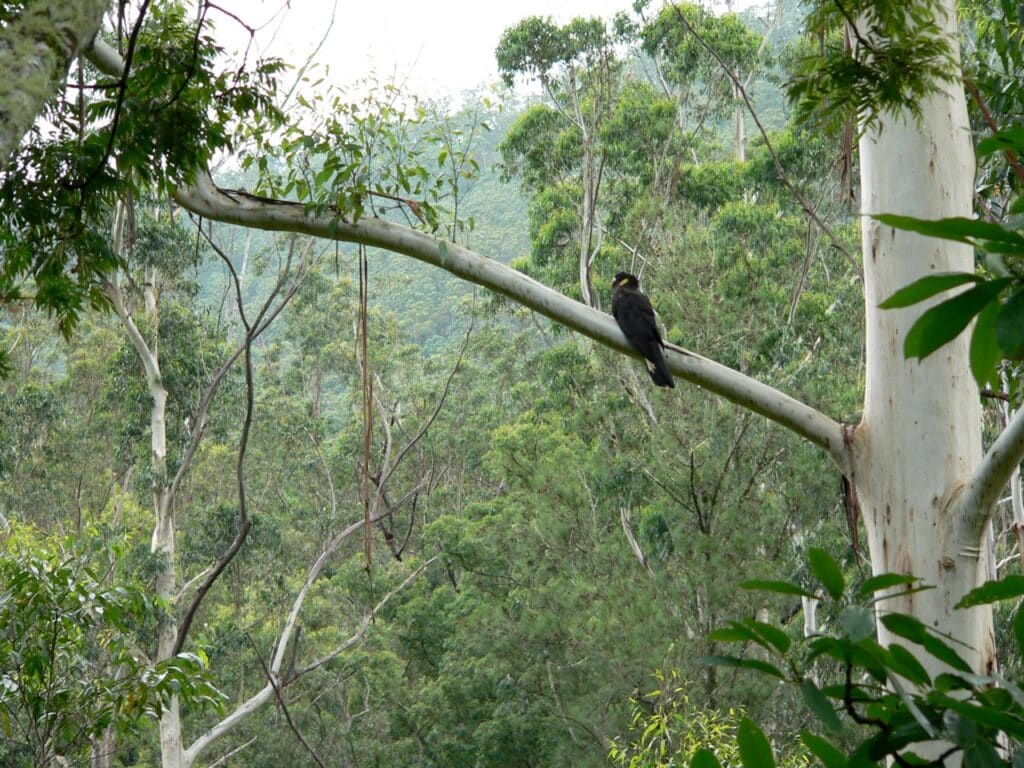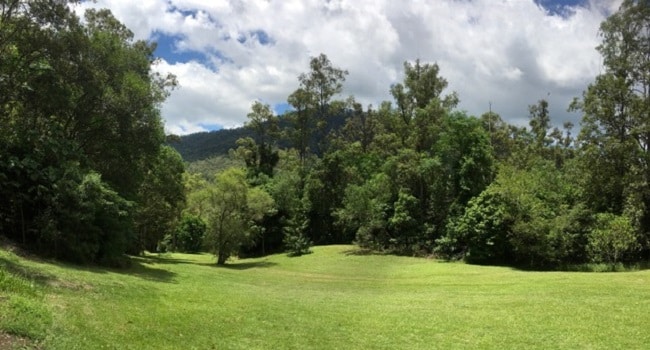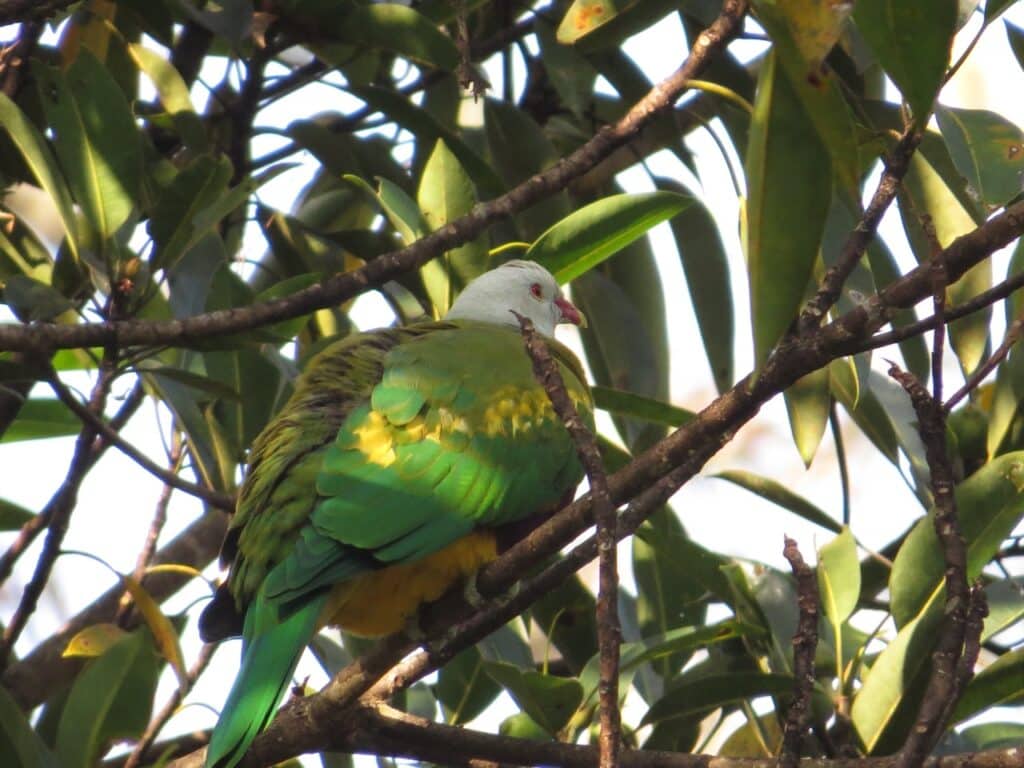Sonja and Arne are the current caretakers of Roseberry Forest Hermitage. The property is located approximately 30km north-west of Kyogle and is part of the upper catchment area of the Richmond River.
Roseberry Forest Hermitage covers 44.08 hectares with the majority of the land consisting of rainforest and wet sclerophyll forest. There is a small area cleared for a residence and there are 3 paddocks of various sizes. Geographical features include gullies, plateaus, steep and undulating areas and a riparian zone. The riparian zone borders Roseberry Creek on the north-eastern side of the property while Toonumbar National Park borders the south-western side. As a result, the property acts as a wildlife corridor between these two locations.
Since moving to the property a large amount of bush regeneration has been done and continues to be carried out, with the aim to enhance and protect the native flora and fauna. The intention is to continue to utilise the property for conservation purposes and to dedicate the property as a wildlife sanctuary.
The area is a biodiversity hotspot and there are a number of endangered and vulnerable species known to inhabit the property. Identified fauna includes regent bowerbirds (Sericulus chrysocephalus), wompoo fruit doves (Ptilinopus magnificus), koalas (Phascolarctos cinereus), long-nosed potoroos (Potorous tridactylus), squirrel gliders (Petaurus norfolcensis), yellow-bellied gliders (Petaurus australis), feathertail gliders (Acrobates pygmaeus), black-cockatoos (Calyptorhynchus spp.) and giant barred frogs (Mixophyes iteratus). Flora includes native jutes (Corchorus cunninghamii), brush sophoras (Sophora fraseri) and brush sennas (Senna acclinus).
This sanctuary is featured in Wildlife Lands 18!
We purchased Roseberry Forest Hermitage, a place of retreat, in 2004 with the intention of preserving a piece of Australian bush after a few years living in Europe. Our 44 hectare property north east of Kyogle borders a National Park and in the past had been logged, used for cattle grazing and left to its own devices, so quite a few weed species had taken up residence when we bought the block, with lantana and large-leaved privet the main culprits.
Upon arriving we can still remember looking at the vegetation along the creek and thinking how lush it all looked, not realising that the vegetation was dominated by a variety of weed species. To get better informed on plant identification and how to tackle the weed problem, Sonja became a qualified bush regenerator. Through bush regeneration training we learned that the forest was made up of a mix of wet sclerophyll and rainforest. On the property you can find eucalyptus trees such as flooded gums, bloodwoods, ironbarks and brush boxes as well as rainforest species like rosewoods, foambarks, white cedars, red cedars, celery woods, bat’s wing coral trees, black beans and numerous others. We have also recorded the presence of threatened plant species, including native jutes (Corchorus cunninghamii) and brush sophoras (Sophora fraserii).
Following several years of bush regeneration we noticed an increase in the variety of birds, counting over 70 species. Regent bower birds, paradise rifle birds, wompoo fruit-doves, honeyeaters and whipbirds are just a few of our regular visitors. The property also supports a variety of other native fauna such as pademelons, swamp wallabies, koalas, possums, gliders, and bandicoots. Our intention is to further expand on the regenerated areas and to create a sanctuary that supports the region’s diverse flora and fauna.
We feel privileged to be able to live in the environment that Roseberry Forest Hermitage provides and are very pleased to have become aware of the existence of the Wildlife Land Trust, which has enabled us to become part of a community that promotes conservation values which reflect our own.

